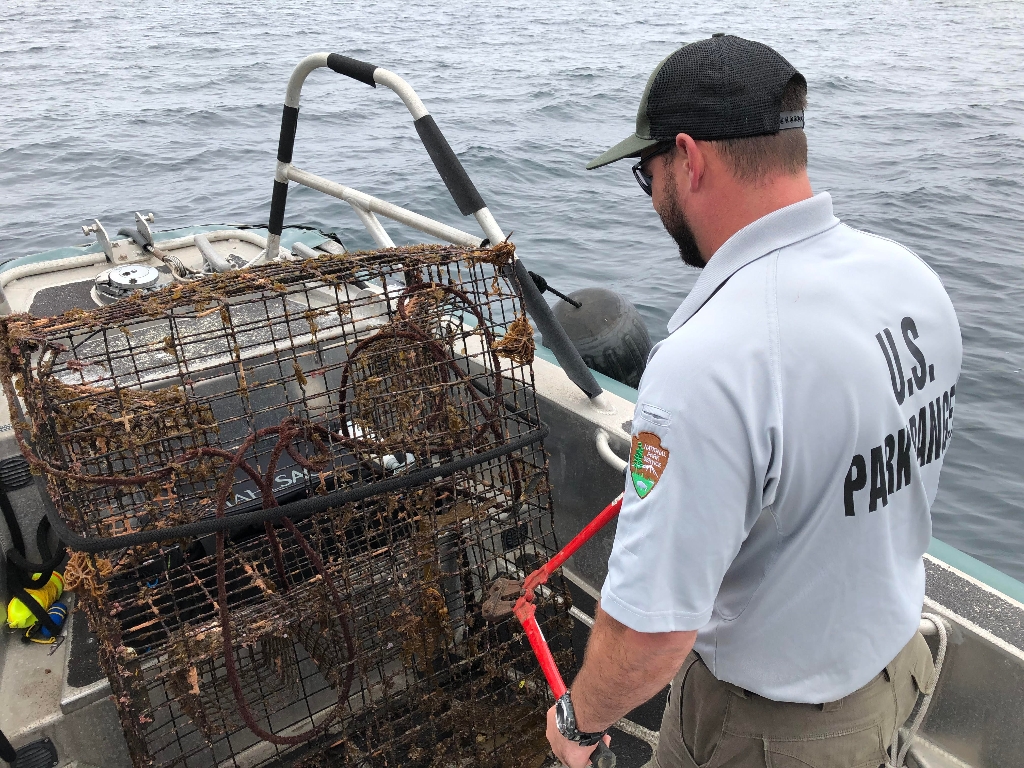
Over the last four decades, the National Park Service and its partners have invested over $20 million in protecting the native species of the Channel Islands through the removal of harmful, nonnative species, including rats, cats, ungulates, Argentine ants, and a variety of weed species. Starting in 2014, Channel Islands National Park, The Nature Conservancy, and the U.S. Navy developed a joint biosecurity program to prevent, detect, and respond to nonnative species introductions. Preventing the re-introduction and establishment of nonnative species is vitally important to preserving the nearly 150 endemic plant and animal species of the islands. As a visitor, you play a valuable role in helping to protect that biodiversity.
How You Can Help
Prior to Departure
Use Pest-Proof Packing
- Store your food in tightly sealed, closed containers to protect from pests.
- Use impermeable containers such as Tupperware, storage bins, or coolers.
- Cardboard packaging is prohibited unless brand new and never opened.
- Improper storage can result in accidental transport of insects and other critters
Inspect and Clean
- As you pack, check and clean your backpacks, shoes, sleeping bags/pads, tents, and other gear.
- Backpack zippers, tents, and the treads, tongues, and laces of shoes frequently harbor threats.
- Be sure to remove all insects, seeds, soil, and other organic material.
- Apply disinfectant such as hydrogen peroxide, isopropyl alcohol, or white vinegar to eliminate fungal spores and bacteria.
- If you hiked through mainland streams in Western states, freezing your gear for a minimum of 6 hours is necessary to eliminate the threat of New Zealand mud snails.
Brush and Spray Your Shoes
- If traveling via Island Packers, use the boot brush station to remove all soil and seeds from your shoes.
- If using alternate transportation, use a brush or pick to remove all soil and seeds.
- Spray your soles with the disinfectants listed above to eliminate fungal spores and bacteria.
- Soil and microscopic organisms can carry plant diseases that cause significant harm to the rare plants and animals on the Channel Islands.
Clean Your Hull
- Use antifouling techniques on your hull, propellers, and intakes and clean them in the harbor to prevent the accidental transport of hitchhiking organisms.
- Check and clean any growth from your boat hull every six to ten weeks as well as before leaving the mainland harbor.
- Check, clean, and dry marine equipment (buoys, mooring lines, anchors, fishing and diving gear, boat trailers) before departing.
- Dispose of any debris from your hull or equipment appropriately on the mainland.
- Nonnative marine invasive species, such as the algae Undaria pinnatifida and Sargassum horneri, threaten the survival of the endemic marine wild
Check For Stowaways
- Check your vessels for rodents, insects, and other critters before departing the mainland.
- Look for signs of rodents such as droppings and chew marks.
- Report any rodent sightings to the vessel captain.
- Set rodent traps on your vessel, including when it is in storage.
- Consider putting rat guards on vessel mooring lines and never attach them directly to the shore.
- Rats and raccoons can reach the Channel Islands as stowaways on boats, which could introduce novel diseases to island wildlife.
Leave Pets at Home or On Your Boat
- Pets, including dogs, are not allowed on the islands within Channel Islands National Park.
- Service animals are allowed if they have completed the required health screening prior to coming ashore on Santa Cruz Island, Santa Rosa Island, and San Miguel Island. for more information visit Service Animals.
- In 1999, canine distemper killed almost all the island foxes on the eastern portion of Santa Catalina Island.
- Pets can also be exposed to diseases and parasites that are unique to Channel Islands wildlife.
Prohibited Items
To prevent the introduction of nonnative species, the following items may not be brought to the park.
-
Live or potted plants
-
Soil
-
Cut flowers
-
Firewood or any untreated, unfinished wood (including hiking sticks)
-
Corrugated boxes
-
Tools or equipment with attached soil
-
Motorized vehicles
-
Bicycles
-
Single-use plastic bags
-
Pets
These restrictions are necessary to protect the breeding populations of marine mammals, endangered species of seabirds, eagles, islands foxes and the other unique and rare species of flora and fauna inhabiting Channel Islands National Park.
On-Island Precautions and Regulations
While Hiking
Trails are pathways for more than just people. Weeds often spread along trails and into adjacent un-infested areas. You can help prevent this by always staying on designated trails, avoiding weed-infested areas, and by not picking or transporting plants when hiking on the islands. Pack out all trash too. Just because a bit of trash is organic —apple cores, orange seeds, etc.— doesn’t mean it can be left behind. While most domestic fruit and vegetable species are not invasive, some can germinate and become pests.
No Campfires
Campfires are prohibited on the islands. In addition to the threat of wildfire, firewood brought from the mainland can harbor harmful organisms. A prime example is the fungal-like disease "Sudden Oak Death," which can attack several species of native trees. You can help prevent the spread of such threats by not transporting firewood under any circumstances.
Is there something we missed for this itinerary?
Itineraries across USA


















































